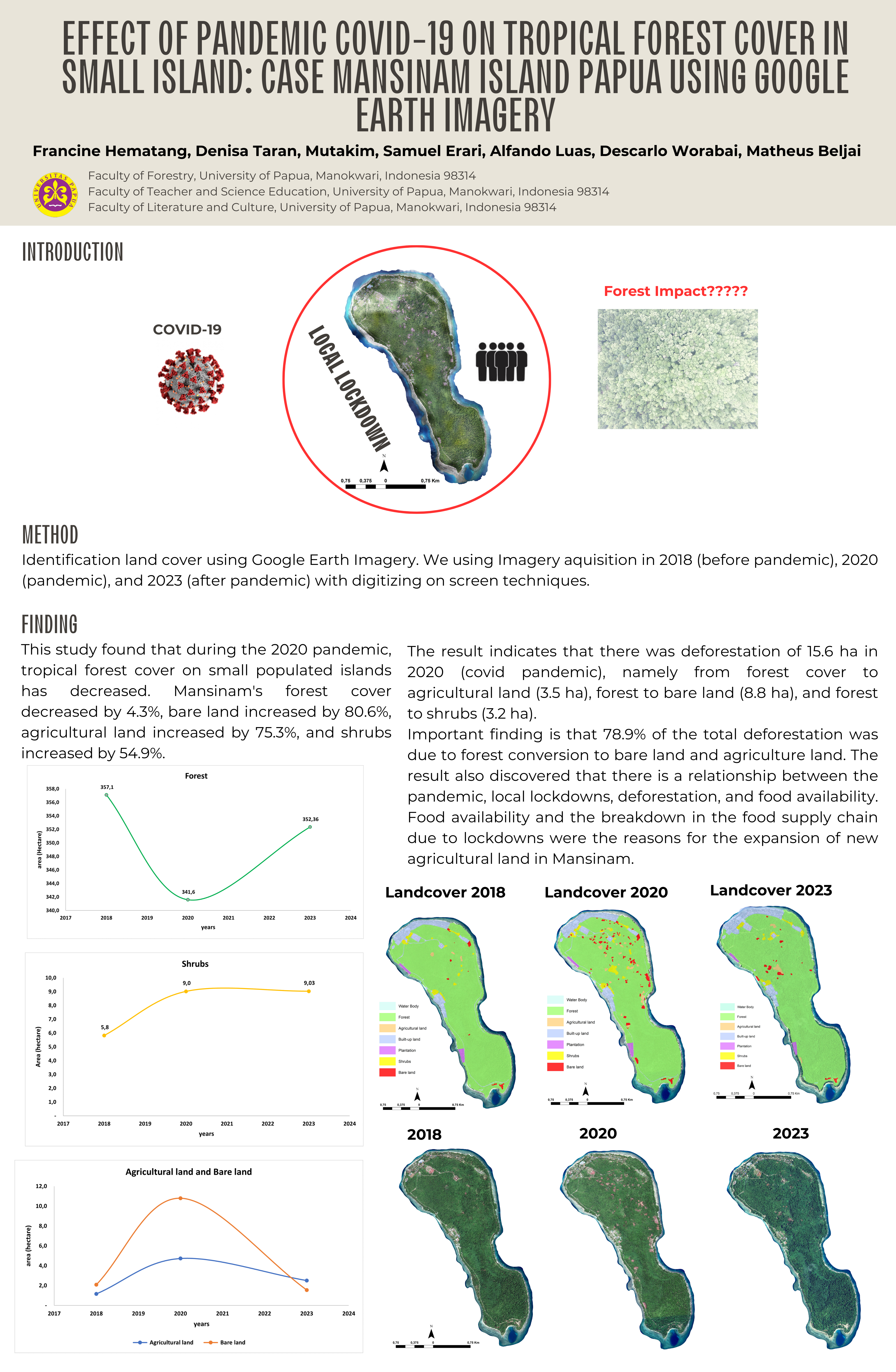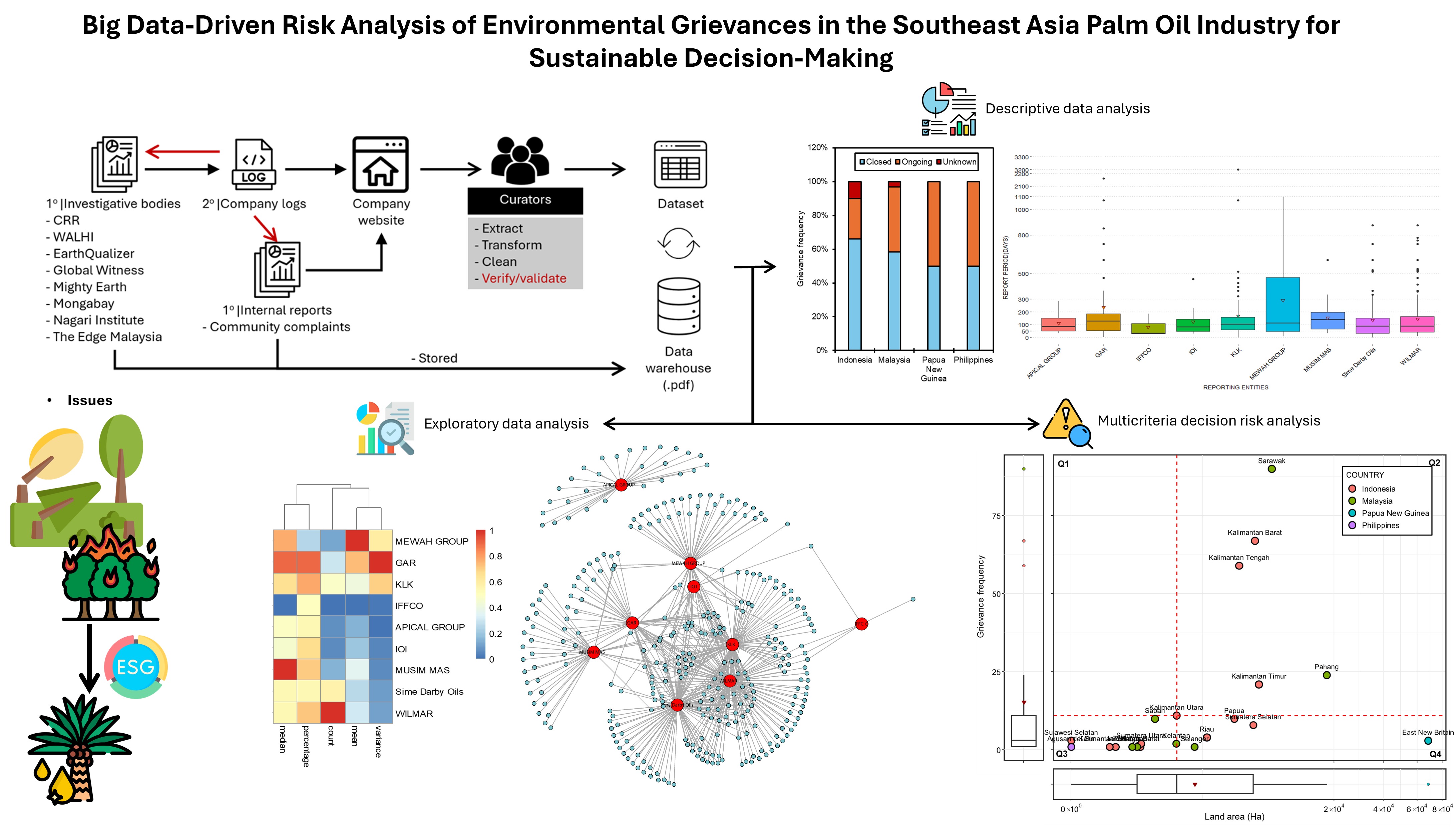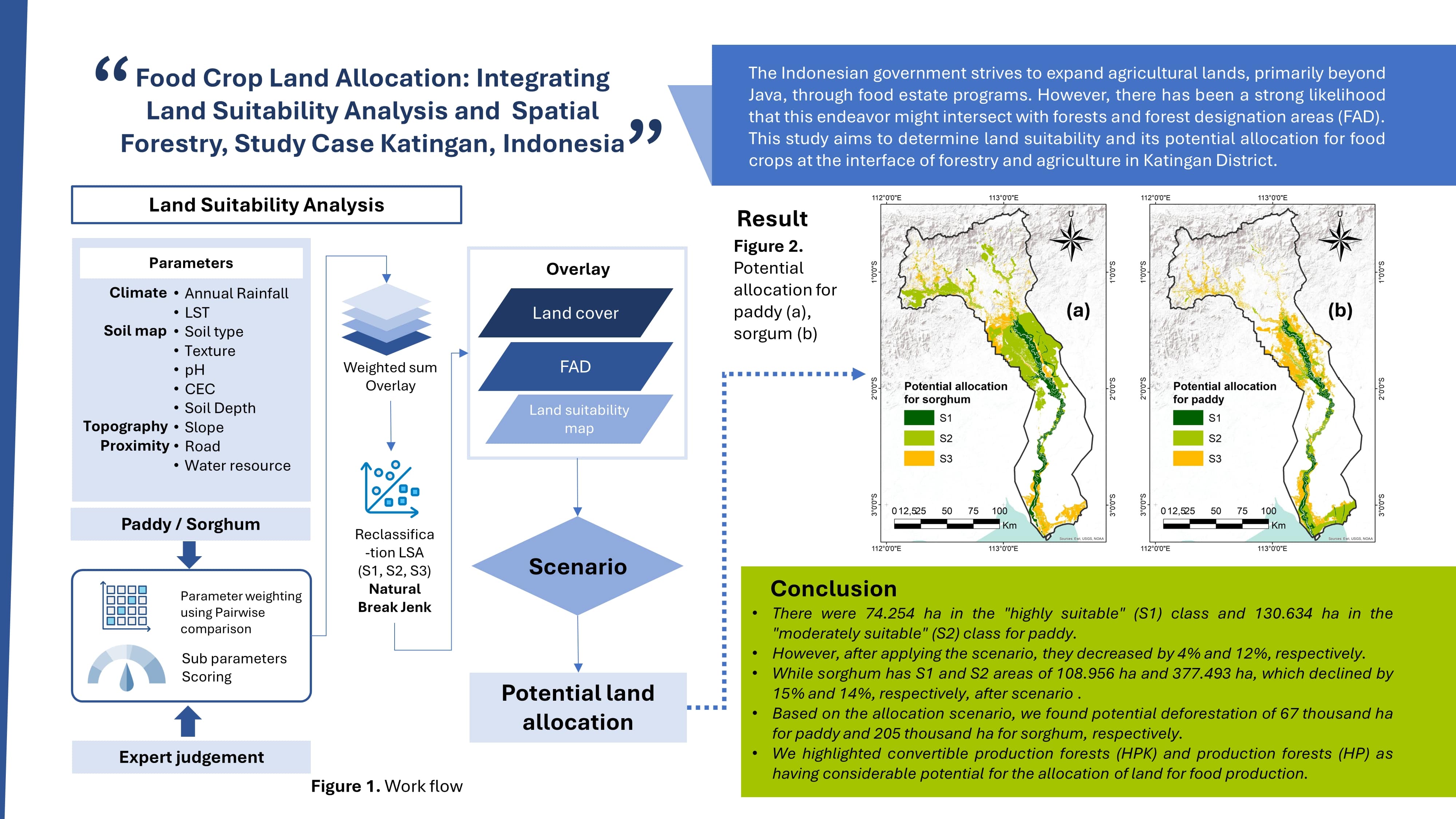Abstract
Forestry sector is the biggest carbon emission contributor in Indonesia which is mainly caused by deforestation. In Kalimantan island one of the largest island in Indonesia has a significant area of forest cover still can be found although an alarming rates deforestation is also exist. This study was purposed to established spatial model of deforestation in Kalimantan island. This information is expected to provide options to develop sustainable forest management in Kalimantan trought optimizing environment and socio-economic purposes. This study used time-series land cover data from the Ministry of Environment and Forestry (2000 – 2013) and is validated by SPOT 5/6 images in 2013. The spatial model of deforestation were developed using binary logistic. The results of logistic regression analysis obtained spatial model of deforestation in Kalimantan = 1.1480714 – (0.033262*slope) – (0.002242*elevation) – (0.000413*distance from forest edge) + (0.000045*Gross Regional Domestic Product). Validation test showed overall accuracy about 79.64% and 77.01% for models of deforestation in 2000–2006 and 2006–2013 respectively.
References
Arkehi S. 2013. Modeling spatial pattern of deforestation using GIS and logistic regression: A case study of northern Ilam forests, Ilam province, Iran. Africa Journal of Biotechnology 10(72):16236-16249. http://dx.doi.org/10.5897/AJB11.1122
Boer R, Sulistyowati L, Zed F, Masripatin N, Kartakusuma DA, Hilman D, Mulyanto HS. 2010. Indonesia Second National Communication Under The United Nations Framework Convention on Climate Change. Jakarta: Ministry of Environment Republic of Indonesia.
Brun C, Cook AR, Lee JSH, Wich SA, Koh LP, Luis R. Carrasco LR. 2015. A comparison of Bayesian spatial models. Global Environmental Change 31:285-295. http://dx.doi.org/10.1016/j.gloenvcha.2015.02.004
Dahlan MS. 2012. Analisis Multivariat Regresi Logistik. Jakarta: Epideminologi Indonesia.
Dorais A, Cardille J. 2011. Strategies for incorporating high-resolution google earth databases to guide and validate classifications: Understanding deforestation in Borneo. Remote Sensing 3(6):1157-1176. http://dx.doi.org/10.3390/rs3061157.
Ewers RM. 2006. Interaction effects between economic development and forest cover determine deforestation rates. Global Environmental Change 16(2):161-169. http://dx.doi.org/10.1016/j.gloenvcha.2005.12.001.
Fielding HBF, Bell JF. 1997. A review of methods for the assessment of prediction errors in conservation presence/absence models. Environmental conservation 24.01:38-49. http://dx.doi.org/10.1017/s0376892997000088.
Foody GM. 2002. Status of landcover classification accuracy assessment. Remote Sensing of Environment. 80(1):185–201. http://dx.doi.org/10.1016/S0034-4257(01)00295-4.
Hoekman D, Qui-ones M, Verhoeven, R, Vissers M, Schut V, Wielaard N. 2009. PALSAR Tropical Forest Cover Mapping, Mosaicing and Validation, Case Study Borneo. In Proceedings of '4th Int. Workshop on Science and Applications of SAR Polarimetry and Polarimetric Interferometry–PolInSAR; April, 2009. Pp. 26–30.
Hosmer JDW, Lemeshow S. 2004. Applied logistic regression. Second Edition. Canada: John Wiley & Sons.
Huang QH, Cai YL, Peng J. 2007. Modeling the spatial pattern of farmland using GIS and multiple logistic regression: A case study of Maotiao River Basin, Guizhou Province, China. Environmental Modeling & Assessment12(1):55–61. http://dx.doi.org/0.1007/ s10666-006-9052-8.
[IPSDH] Direktorat Inventarisasi dan Pemantauan Sumber Daya Hutan. 2012. Rekalkulasi Penutupan Lahan 2011. Jakarta: Dirjen Planologi Kehutanan, Kementerian Kehutanan.
[IPSDH] Direktorat Inventarisasi dan Pemantauan Sumber Daya Hutan. 2014. Rekalkulasi Penutupan Lahan Indonesia Tahun 2013. Jakarta: Dirjen Planologi Kehutanan, Kementerian Kehutanan.
[IPSDH] Direktorat Inventarisasi dan Pemantauan Sumber Daya Hutan. 2014b. Deforestasi Indonesia Periode 2013 2014. Jakarta: Dirjen Planologi Kehutanan, Kementerian Kehutanan.
Langner A, Miettinen J, Siegert F. 2007. Land cover change 2002–2005 in Borneo and the role of fire derived from MODIS imagery. Global Change Biology 13(11):2329–2340. http://dx.doi.org/10.1111/j.1365-2486.2007.01442.x.
Kaimowitz D, Angelsen A. 1998. Economic Models of Tropical Deforestation: A Review. Bogor: CIFOR.
Kumar R, Nandy S, Agarwal R, Kushwaha SPS. 2014. Forest cover dynamics analysis and prediction modeling using logistic regression model. Ecological Indicators 45:444–455. http://dx.doi.org/10.1016/j.ecolind.2014.05.003.
Margono BA, Potapov PV, Turubanova S, Stolle F, Hansen MC. 2014. Primary forest cover loss in Indonesia over 2000–2012. Nature Climate Change. http://dx.doi.org/10.1038/nclimate2277.
Margono BA, Turubanova S, Zhuravleva I, Potapov P, Tyukavina A, Baccini A, Hansen MC. 2012. Mapping and monitoring deforestation and forest degradation in Sumatra (Indonesia) using Landsat time series data sets from 1990 to 2010. Environmental Research Letters 7(3):034010. http://dx.doi.org/10.1088/1748-9326 /7/3/034010.
Menard S. 2002. Applied Logistic Regression Analysis: Sage University Series on Quantitative Applications in the Social Sciences. Volume 106. Thousand Oaks: Sage.
O'brien RM. 2007. A caution regarding rules of thumb for variance inflation factors. Quality & Quantity 41(5):673–690. http://dx.doi.org/10.1007/s11135-006-9018-6.
Park S, Choi C, Kim B, Kim J. 2013. Landslide susceptibility mapping using frequency ratio, analytic hierarchy process, logistic regression, and artificial neural network methods at the Inje area, Korea. Environmental Earth Sciences 68(5):1443–1464. http://dx.doi.org/10.1007/s12665-012-1842-5.
Prasetyo LB, Kartodihardjo H, Adiwibowo S, Setiawan Y, Okarda B. 2009. Spatial model approach on deforestation of Java Island, Indonesia. Journal of Integrated Field Science 6:37–44. http://dx.doi.org/10.4018/978-1-4666-2038-4.ch113.
Romijn E, Ainembabazi JH, Wijaya A, Herold M, Angelsen A, Verchot L, Murdiyarso D. 2013. Exploring different forest definitions and their impact on developing REDD+ reference emission levels: A case study for Indonesia. Environmental Science & Policy 33:246–259. http://dx.doi.org/10.1016/j.envsci.2013.06.002.
Rutherford GN, Guisan A, Zimmermann NE. 2007. Evaluating sampling strategies and logistic regression methods for modelling complex land cover changes. Journal of Applied Ecology 44(2):414–424. http://dx.doi.org/10.111/j.1365-2664.2007.01281.x.
Scriven SA, Hodgson JA, McClean C J, Hill JK. 2015. Protected areas in Borneo may fail to conserve tropical forest biodiversity under climate change. Biological Conservation 184:414–423. http://dx.doi.org/10.1016/j.biocon.2015.02.018.
Soureshjani MH, Kimiagari AM. 2013. Calculating the best cut off point using logistic regression and neural network on credit scoring problem-A case study of a commercial bank. African Journal of Business Management 7(16):1414–1421. http://dx.doi.org/10.5897/AJB.
Tejada JJ, and Punzalan JRB. 2012. On the misuse of Slovins formula. The Philippine Statistician 61(1):129–136.





